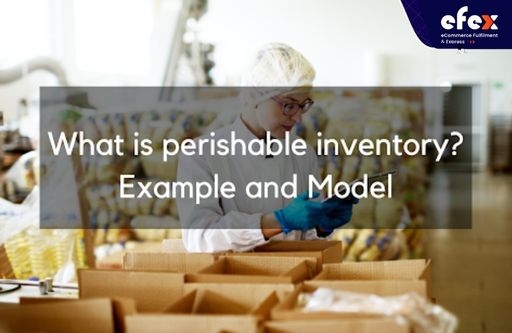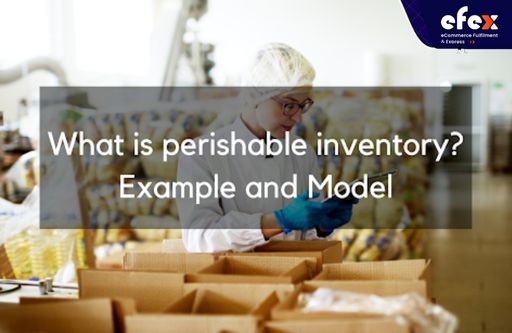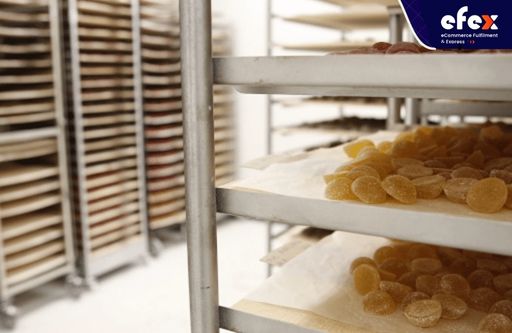
Any company that sells products faces the issue of managing inventory, but companies that deal in goods that gradually lose quality or expire suffer this challenge more acutely. Businesses can increase their profit by eliminating needless losses and maximizing their possibilities – before they pass away — by paying heed to perishable inventory and using the proper approaches, techniques, and processes.
Because of this, managing perishable inventory is a crucial component of any company that deals with foodstuff or any other perishable goods. But what exactly falls under perishable inventory, and why is it crucial to manage this division? Let us explain to us in the below post!

Before understanding what perishable inventory means, let us explain to use of the term “perishable” and “nonperishable”. When anything spoils or goes bad, it is said to be "perishable" since it is no longer usable. When perishable goods approach their expiration date, they are no more useable and have lost all of their freshness.
Meat, fruit, milk, or cheese are all perishable food items. Contrarily, nonperishable commodities do not have an expiry date and can be used forever or for a longer period of time. Clothing and food goods like canned soup or tea bags are examples of non-perishable things.
👉 Read More: What Is Available To Promise Inventory? Example and Calculation
👉 Read More: What is Inventory Aging? Formula and Calculation
Perishable inventory includes products that gradually lose all of their value due to expiration or deterioration. Product quality can degrade gradually, just like a research report that will become less important (and hence less useful) over time, or it can degrade quickly, like the worth of an airline ticket after the flight takes off.

Perishable stock typically refers to food inventories. Meat, milk products, and produce are a few examples of perishable inventory. However, in addition to food, other products that can spoil are sometimes referred to as perishable stock. Consider flowers as an example. Dead plants or animals are prohibited from sale by florists and plant shops.
Even tickets for concerts, sporting events, and other live events are regarded as perishable goods since they lose value after the event is done. The same is true for hotels: a business loses money when a room is unoccupied for a whole night. Even though the terms perishable stock and perishable inventory are frequently utilized interchangeably, in reality, they are not always equal.
More often than not, the term "perishable stock" refers to perishable products that can be stored.
As a result, while thinking about perishable inventories, not only will hotels, concert venues, and theatre organizations have this perishable stock.
Perishable inventory is common in many businesses. Certain goods simply have limited inherent shelf life. Perishable items like food products and even health and beauty products are frequently found in organic products. Pharmaceuticals are also one example of a perishable product that typically has to be refrigerated. Such would be COVID-19 vaccinations, which, if removed from the freezer, have a very short life span.
As technology advances and device capabilities increase, perishable items can result from either intended or unplanned obsolescence.
👉 Read More: What is Inventory Aging Report: Sample And Format
From autos to computer chips, product cycles that introduce new versions each year have a foreseeable at least-partial perishability. Perishable goods also include experiential goods like the previously stated golf rounds hotel accommodations, tickets to events, and transportation services that call for a customer to be somewhere at a specified time.
Nevertheless, as nonphysical inventories require alternative revenue management strategies, this essay won't primarily focus on such. Perishable goods are used in business-to-business sectors as well. Some of these are simply enlarged versions of business-to-consumer issues while others are distinctive, like ad spots in the daily paper or on a tv show.

In a nutshell, Examples of inventory and perishable items include:
One of the most difficult forms of inventory to handle is perishable inventory. Since perishable goods expire, businesses have a limited amount of time to buy, store, and sell goods before they lose their value. Management of perishable inventory is therefore crucial for a company's bottom line. A business will gain the following advantages when it effectively adopts an inventory management system for such perishable goods:
Because timing is so crucial when things can expire, controlling perishable inventory is a particularly challenging inventory management task.

As a business owner, you must learn to handle perishable inventory if you want to apply inventory management and reap the benefits mentioned above. The FIFO method is one of the most widely used techniques for controlling perishable inventories. The oldest inventory goods are reported as purchased first under the FIFO technique.
The costs connected with the perishable commodities that are purchased first are the expenditures that are incurred first, not that the oldest products must actually be sold. By handling perishable inventory tracking in this way, you increase your overall profit while decreasing the likelihood that you will need to deduct the cost of ruined goods.
To maximize your inventory's profitability, understanding more about the valuation of inventory and costing techniques will truly help your business.
The difficulty in controlling perishable inventory is finding a balance between demand and supply that takes time as well as quantity into account. Companies dealing in perishable inventory have to satisfy each customer's requirement as soon as possible without keeping too much inventory left over that risks from expiry become prohibitively expensive. It is not sufficient for a firm to have enough merchandise to satisfy the needs of its consumers.
FIFO is simply one of the strategies employed by companies to effectively manage their inventory. When maintaining your perishable inventory, there are a lot of factors you need to keep in mind.

Here are 6 tips we would like to recommend to you:
With a single-period inventory management system, you only buy enough products for that time. You will evaluate the situation of your existing supply and demand after the items from your initial order have been acquired before placing a second order. The system will reduce the number of goods that spoil quickly. Let's say you place a four-week contract for 200 oranges.
You won't buy any more oranges until after the 4th week if you supply all 200 by the end of the 3rd week. You'd waste less if you put off ordering more products until the following period.
Businesses can have a thorough grasp of the products they have, the safety inventory they have, and the products they want to sell by using inventory tracking. Understanding how many or how little of something you have provides you the power to take action. You may decide to cancel the second package before the following period if you place a request for 50 cases of a brand-new peach beverage but none of your consumers elect to purchase it.
Perhaps you get a fresh supply of strawberries from a different vendor, and they sell out quickly. You might consider looking at your inventory totals and decide to exclusively buy strawberries from the new source going forward since they sell better than the older provider. You can use inventory tracking to gather the data you need to make wise business decisions that will boost the bottom line of the company.
Performing an inventory audit entails counting your tangible assets and comparing the precise quantities of your perishable items with the financial statements of your company. Regular inventory audits assist identify how much of a company's inventory has been dropped due to theft, wastage, damage, and obsolescence.
Periodic audits can assist offset these losses and stop wastage before it becomes out of control as perishable commodities are more susceptible to deterioration than nonperishable ones. Regular auditing also guarantees that your stock and books include the same data; this is crucial for the reporting of perishable material.
Your company is only as successful as the goods you offer. You need reputable suppliers in order to get reliable items. A positive working connection with your suppliers may result in better offers and higher-quality products.

You must make sure that your perishable goods arrive at your shop in great condition and haven't previously gone bad because they normally have a short lifespan. Find the correct suppliers and only work with them if they can give you high-quality perishables.
Always keeping a contingency plan in place when working with any kind of inventory, is a wise maxim. A good plan for your business is to be ready for every scenario. Your perishable inventory needs to be stored properly as a part of the management process.
What would happen if your commercial refrigerator broke down in the late hours of the night, spoiling all of your frozen goods by morning? Might a backup generator have been set up? Can the spoiled products be written off? These are the concerns you should consider if the worst comes and the considerations you should ask yourself.
Last but not least, implementing software, such as a batch inventory control system, in your company is the ideal way to enhance how to track shelf life management. For producers who need to keep track of a big number of things, inventory management solutions that can monitor your perishable stock are going to be vital. You can manage your inventory, production, as well as other areas from a visible dashboard when perishable inventory control software is used. You can also benefit from:
👉 Read More: What Is Capable-To-Promise? Specific Example
Due to the obvious near-constant need to match demand with supply controlling perishable inventory is an especially tough type of inventory management. Storing too much may be more expensive than it is with durable items, and there is a greater chance of suffering financial loss if goods go bad without being sold.
Luckily, inventory control and demand forecasting techniques have never been more effective. There are several tried-and-true ways for enhancing perishable inventory management, from gathering and analyzing data to overseeing interactions with vendors and clients.
Modern software has made it possible for even small companies to manage perishable inventory in worldwide supply chains throughout unpredictable times, and we can see that these tips are in use all across the world. An ideal inventory management software system will develop with a company, starting off as a cost-effective option for smaller businesses and eventually expanding to support massive corporations with highly advanced capabilities.
